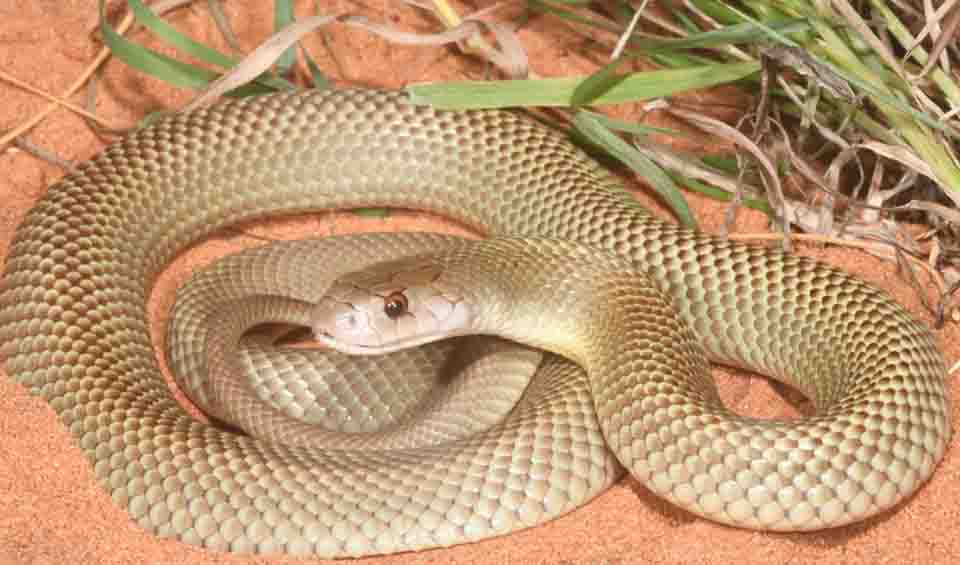Pseudechis
Known for their distinctive banding patterns, which resemble the stripes of a tiger
This genus includes some of Australia’s most interesting and widely recognized venomous snakes. These snakes are known for their typically dark coloration, though their colors can vary, and their adaptability to different environments. The genus includes several species, such as the red-bellied black snake, the mulga snake (or king brown snake), and the blue-bellied black snake.
Interestingly, despite being called a brown snake, it belongs to the black snake group. Their color can range from brown to coppery, and it has a sturdy, muscular build. These snakes are highly adaptable and can be found in various environments, from arid deserts to woodlands. They have a varied diet, feeding on small mammals, birds, lizards, and even other snakes.
A unique characteristic of these snakes is the potency of their venom. While their venom is not as toxic as that of some other Australian snakes, like the inland taipan or eastern brown snake, it is still dangerous and can cause serious symptoms in humans. The venom contains both neurotoxins, which affect the nervous system, and myotoxins, which damage muscle tissue. However, bites from these snakes are relatively rare, as they tend to avoid confrontation and will usually only bite if they feel threatened or cornered.
One interesting behavior observed in Pseudechis snakes, especially the red-bellied black snake, is their tendency to share habitats with other snake species, including the highly venomous eastern brown snake. This is unusual, as many snake species are highly territorial. The red-bellied black snake’s presence can even help reduce the number of eastern brown snakes in an area, as they are known to eat the young of this more dangerous species.
Species in this genus
King brown snake
One of the longest land snakes in the world, and its venom is highly potent


